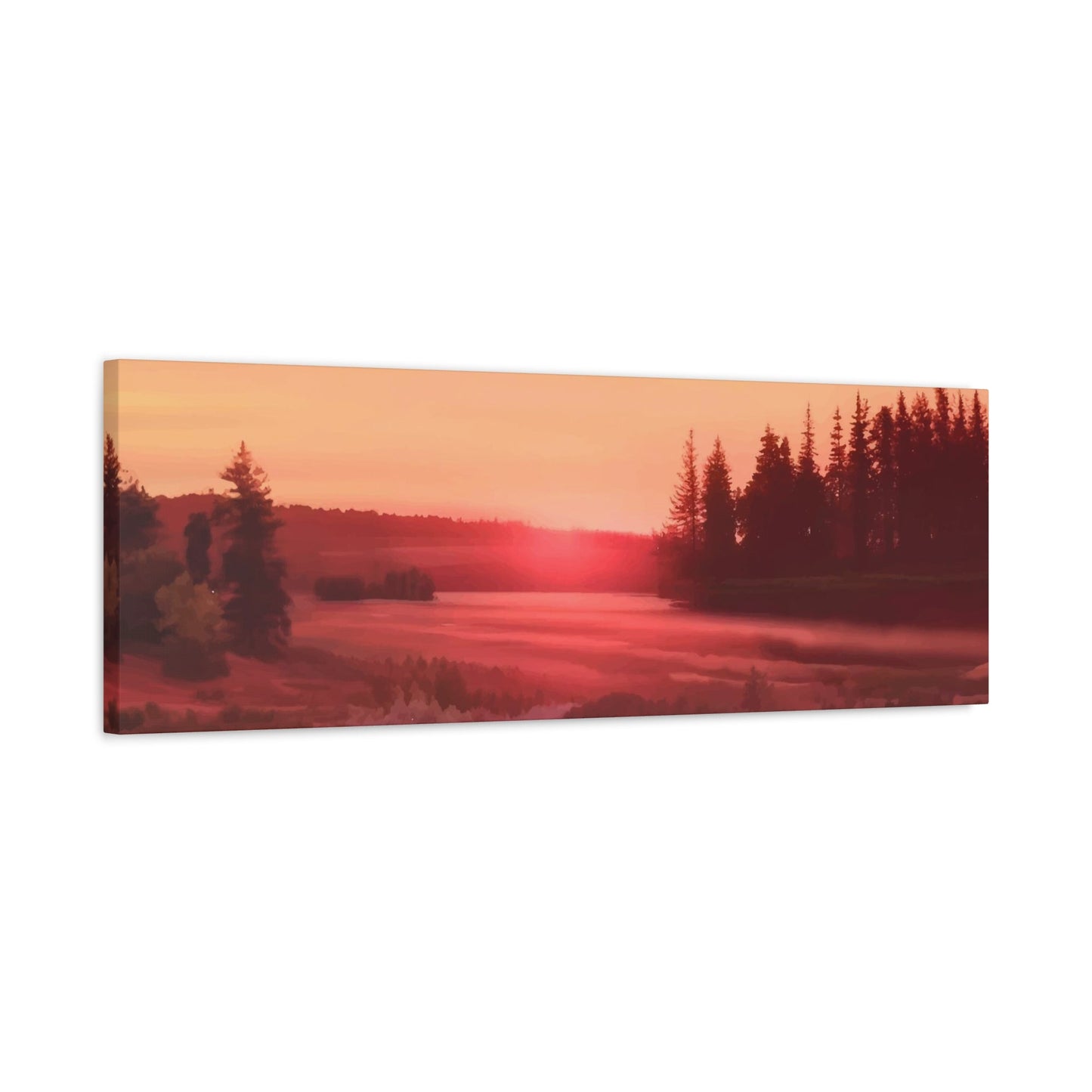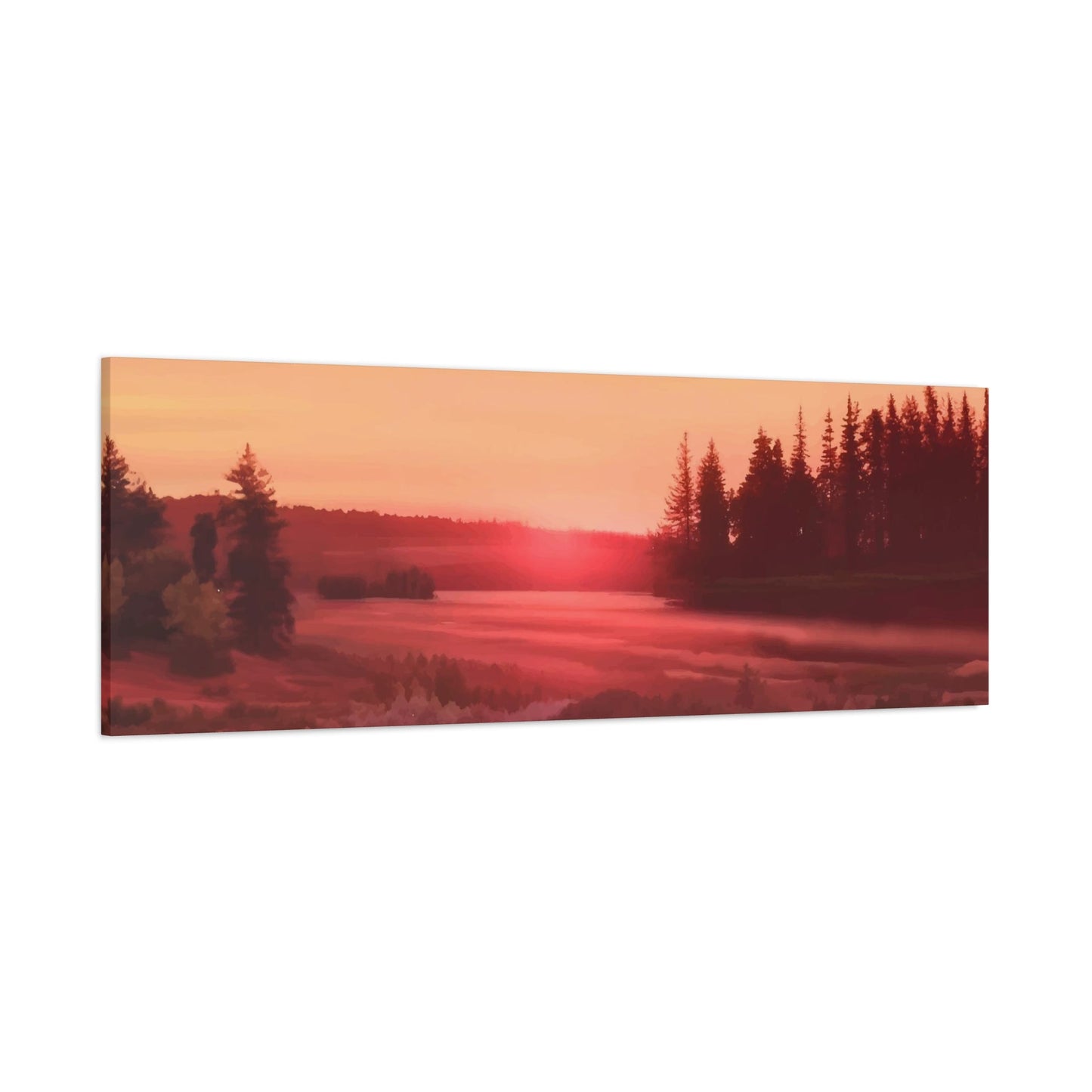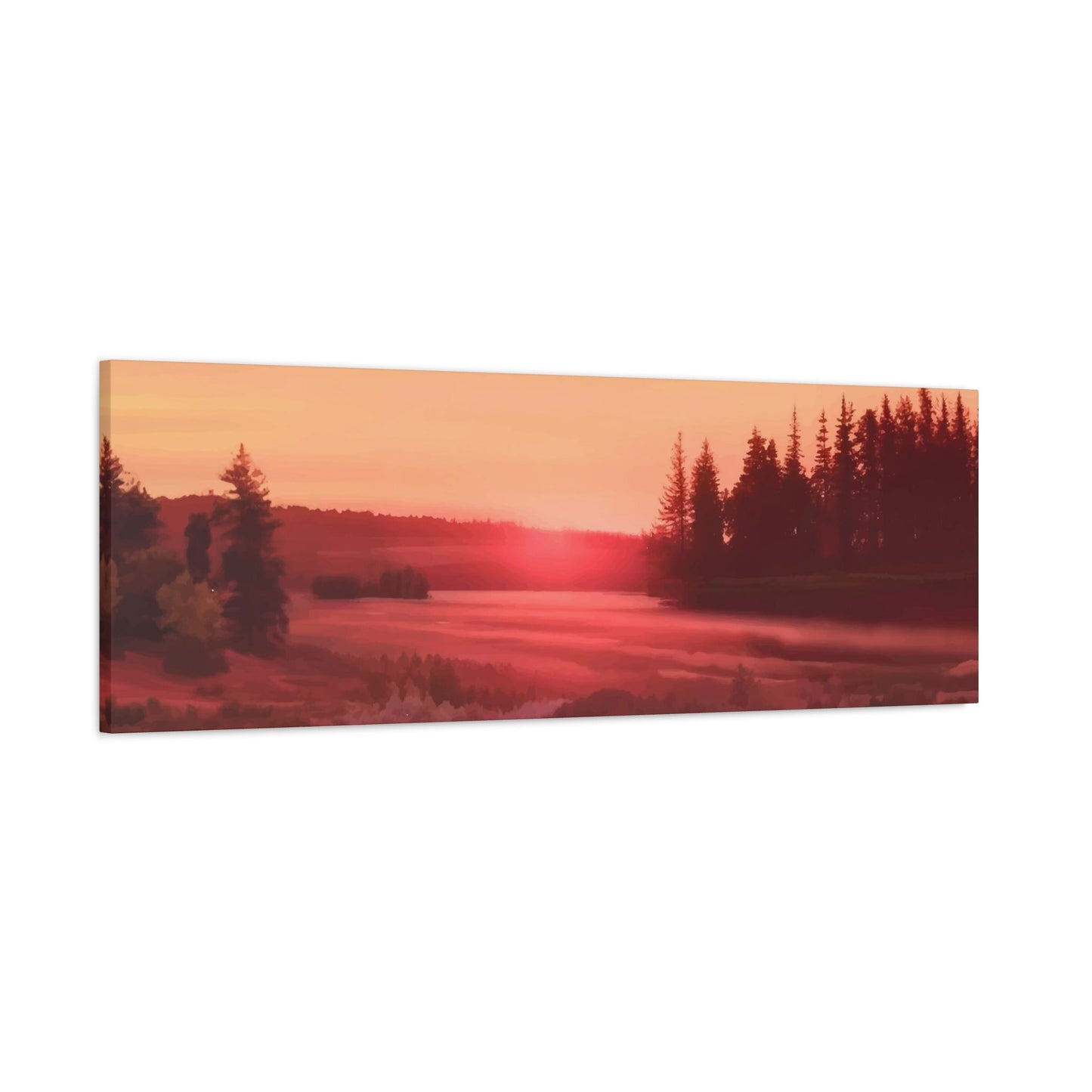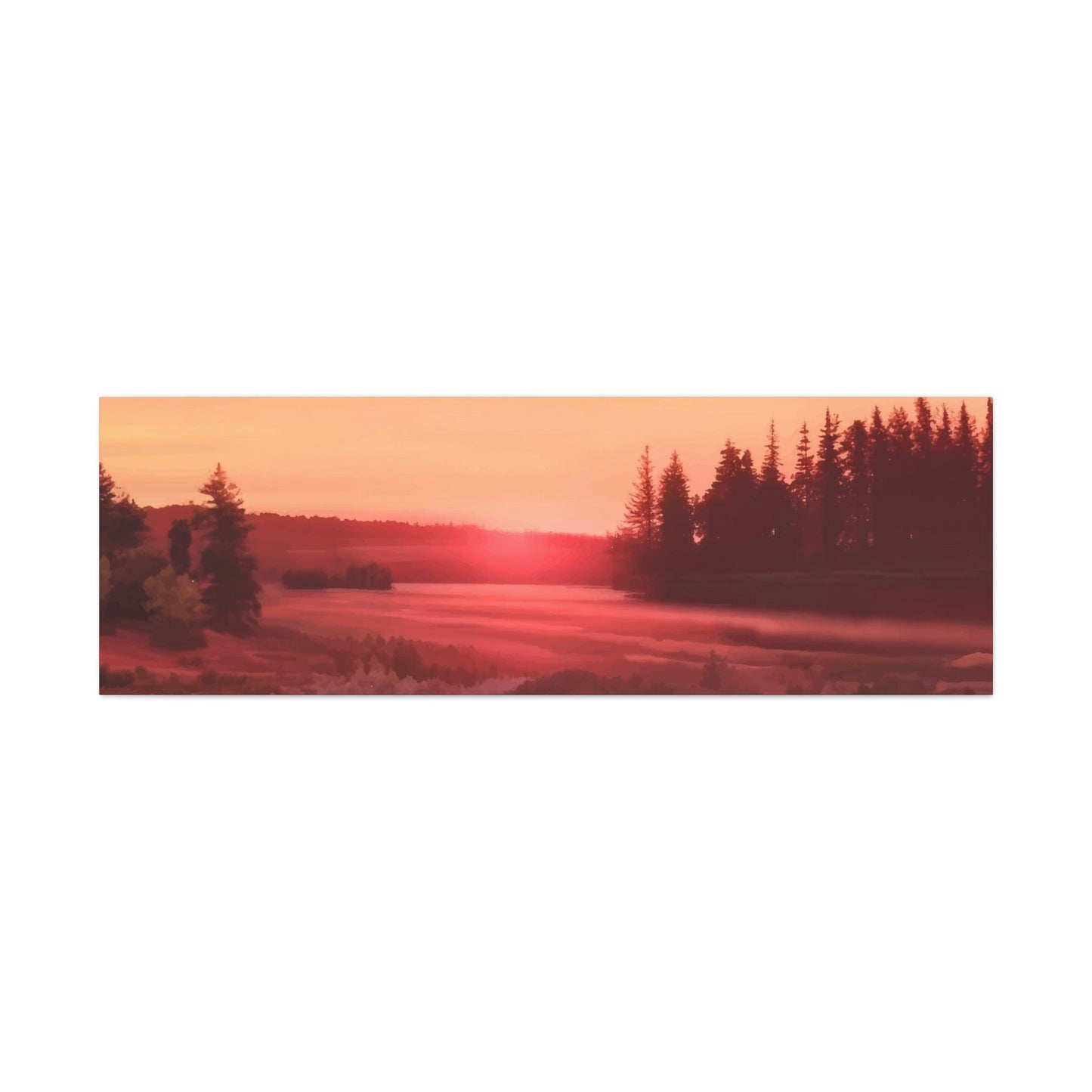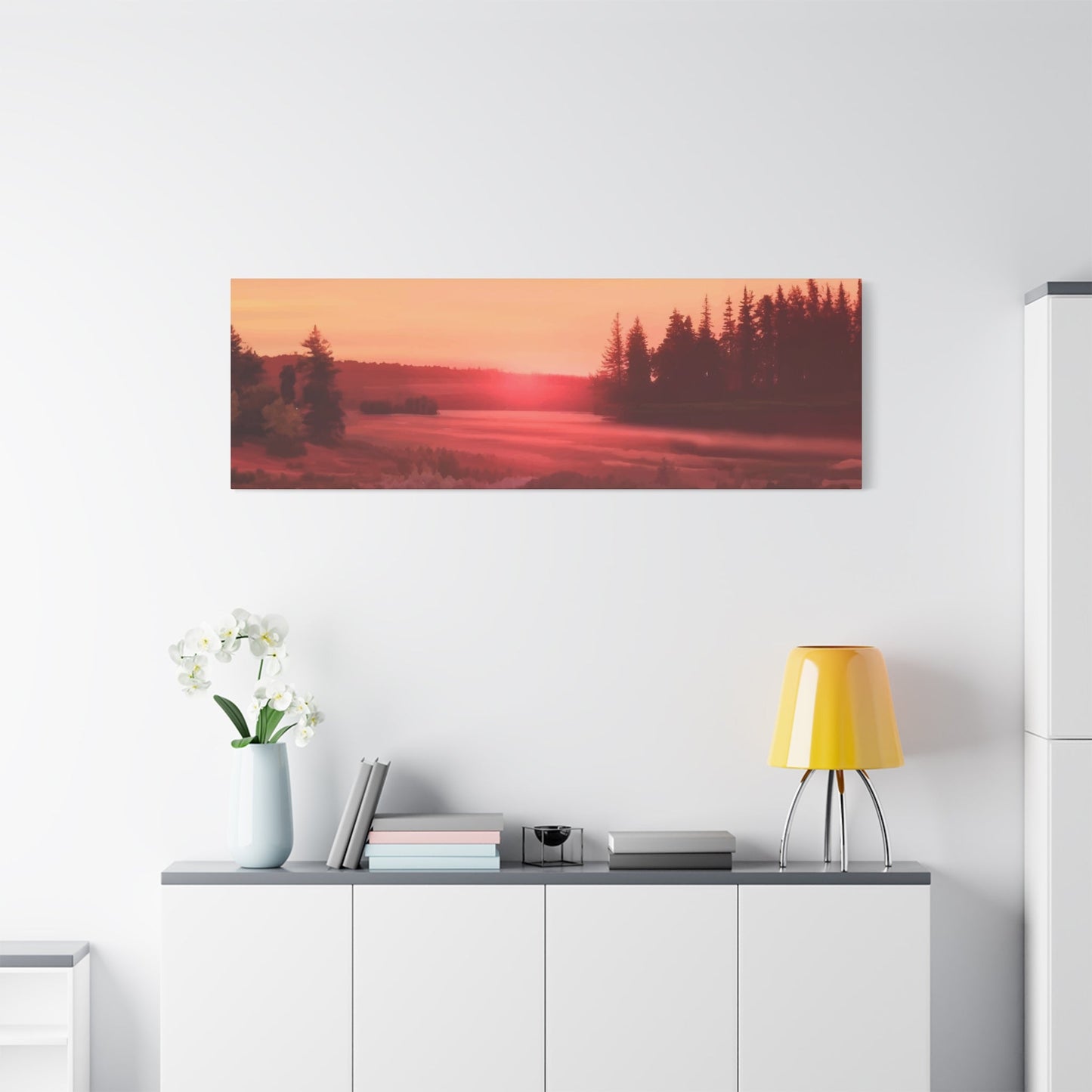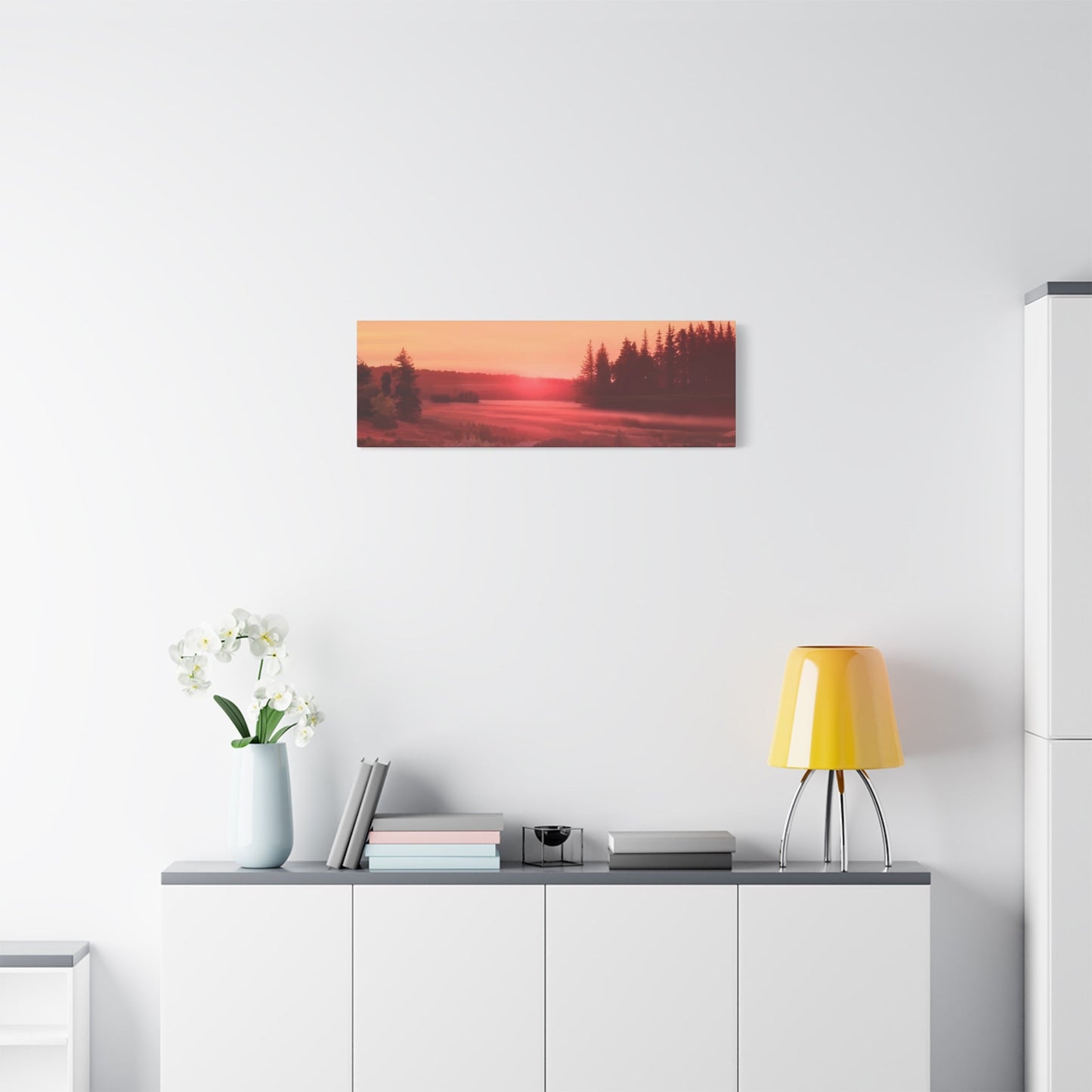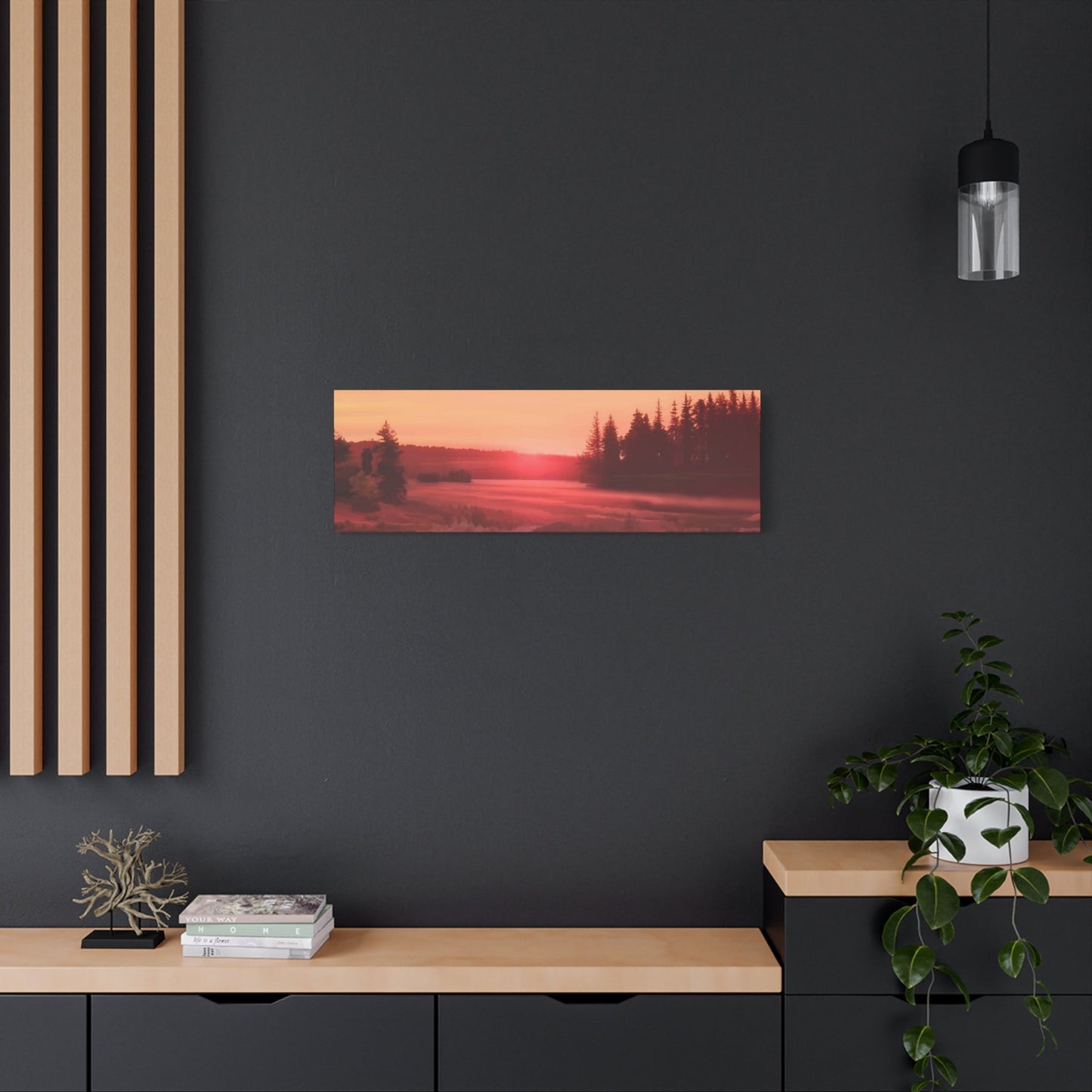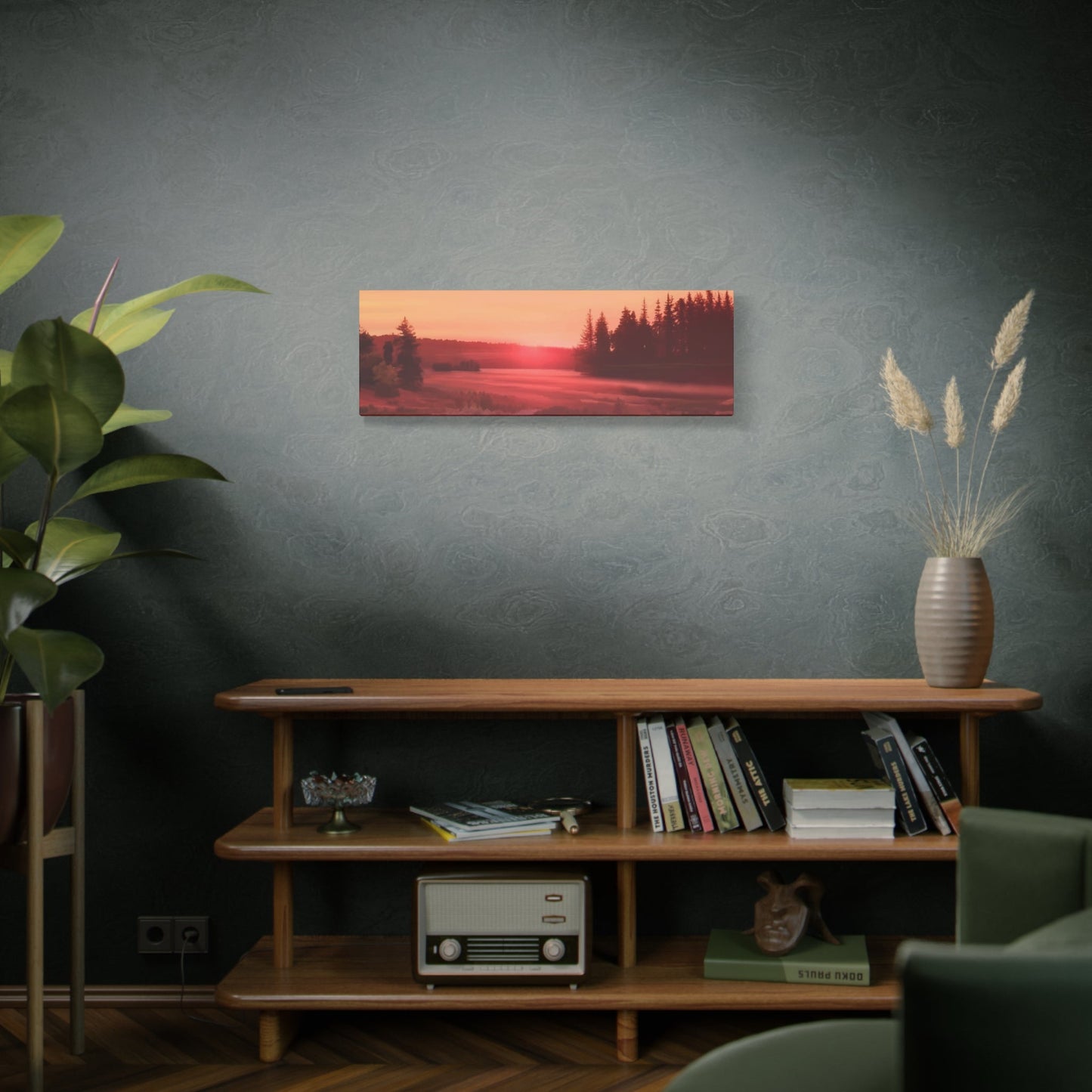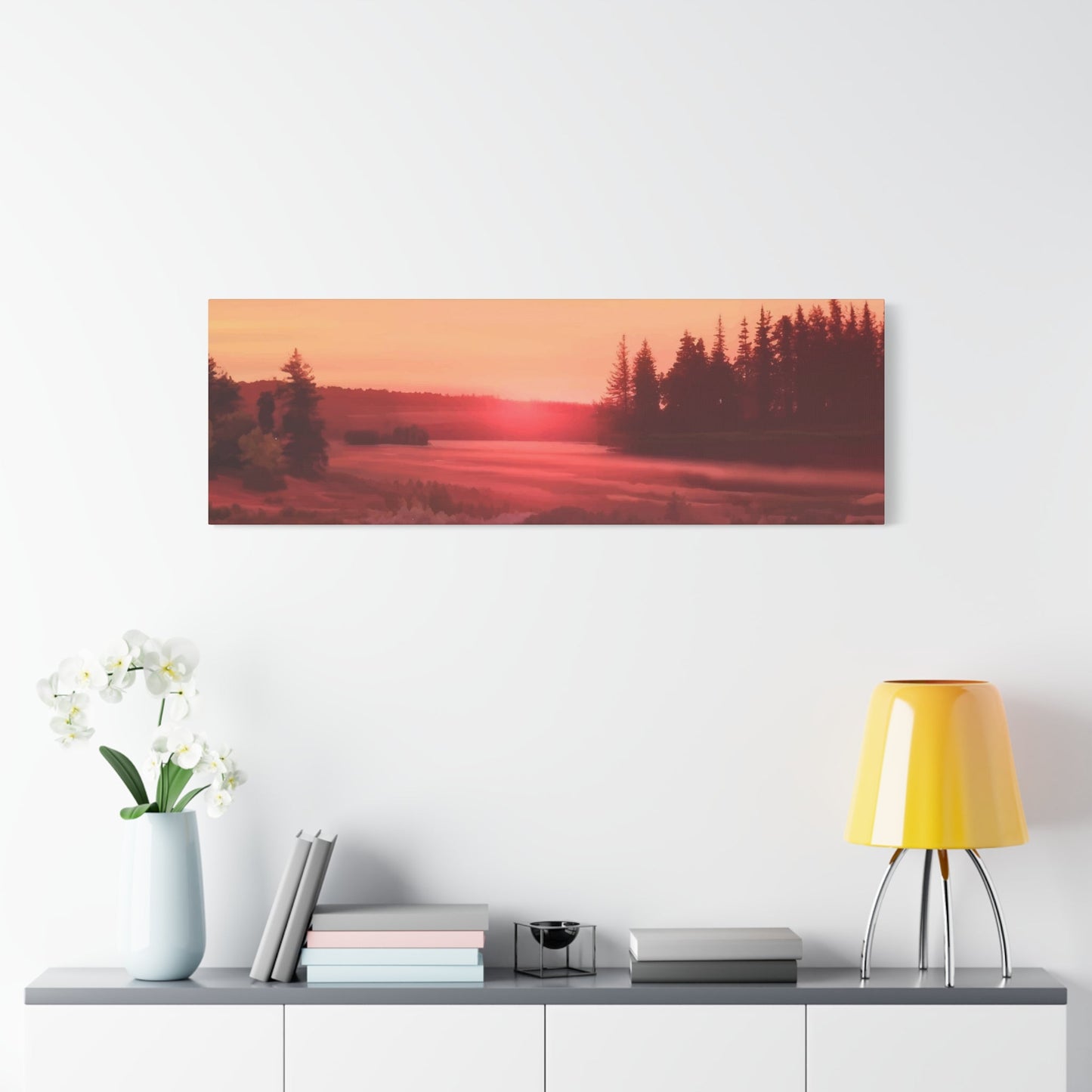Breathtaking Landscape Wall Art: Transform Your Home with Nature's Beauty
The allure of nature has captivated humanity for centuries, inspiring artists to capture the breathtaking beauty of our natural world on canvas, paper, and through the lens of cameras. In today's fast-paced urban lifestyle, bringing elements of the outdoors into our living environments has become more important than ever. Landscape wall art serves as a powerful medium to reconnect with nature while enhancing the aesthetic appeal of our homes and workplaces.
This comprehensive exploration delves into the multifaceted world of landscape wall art, examining various styles, techniques, and approaches that can elevate any environment. From stunning panoramic vistas to intimate garden scenes, landscape artwork offers an endless array of possibilities for creating visually compelling and emotionally resonant displays that speak to our innate connection with the natural world.
The psychological benefits of incorporating natural imagery into our living environments cannot be overstated. Research has consistently shown that exposure to nature scenes, even in artistic form, can reduce stress levels, improve mental clarity, and promote overall well-being. This phenomenon, often referred to as biophilic design, recognizes our fundamental need to connect with nature as an essential component of human health and happiness.
Stunning Nature Scenes for Your Walls
The world offers an incredible diversity of natural landscapes, each possessing unique characteristics that can serve as inspiration for wall art. From towering mountain peaks shrouded in mist to serene lakeshores reflecting golden sunsets, nature provides an inexhaustible source of artistic inspiration that can transform any room into a sanctuary of beauty and tranquility.
Majestic mountain ranges have long captured the imagination of artists and art enthusiasts alike. The dramatic interplay of light and shadow across rocky surfaces, combined with the sense of scale and grandeur that mountains convey, creates powerful visual statements that can serve as focal points in any room. Whether depicted in the soft pastels of dawn breaking over snow-capped peaks or the bold contrasts of a stormy mountain landscape, these scenes bring a sense of adventure and wilderness into domestic settings.
Ocean vistas offer another compelling category of nature scenes, with their endless horizons and ever-changing moods providing rich material for artistic interpretation. The rhythmic patterns of waves crashing against rocky shores, the subtle gradations of color in a sunset over calm waters, or the dramatic spectacle of storm clouds gathering over turbulent seas all offer different emotional resonances that can complement various decorating themes and personal preferences.
Forest landscapes provide intimate encounters with nature's intricate details, from the delicate play of dappled sunlight filtering through dense canopies to the rich textures of bark, leaves, and undergrowth. These scenes often evoke feelings of peace and contemplation, making them particularly suitable for bedrooms, studies, or meditation areas where tranquility is desired.
Desert landscapes, with their stark beauty and minimalist compositions, offer a different kind of natural drama. The sweeping curves of sand dunes, the architectural forms of cacti and rock formations, and the intense colors of desert sunrises and sunsets create bold, graphic images that work particularly well in contemporary settings where clean lines and uncluttered aesthetics are valued.
Tropical paradise scenes transport viewers to exotic locations with their lush vegetation, crystal-clear waters, and vibrant colors. Palm trees swaying in ocean breezes, hidden waterfalls cascading into emerald pools, and colorful coral reefs teeming with marine life all offer escapist fantasies that can enliven any environment with their sense of warmth and adventure.
Pastoral countryside scenes celebrate the gentler aspects of nature, featuring rolling hills dotted with grazing animals, picturesque farmhouses nestled among flowering meadows, and winding country roads disappearing into distant horizons. These images often evoke nostalgia and simplicity, making them perfect for creating cozy, welcoming atmospheres in family homes.
Seasonal transformations provide endless variations on natural themes, from the fresh greens and delicate blossoms of spring to the rich golds and russets of autumn. Winter landscapes with their stark beauty and pristine snow-covered vistas offer opportunities for minimalist compositions, while summer scenes burst with life and color, capturing nature at its most abundant and energetic.
Popular Landscape Art Styles to Try
The world of landscape art encompasses a rich variety of artistic styles and movements, each offering unique approaches to interpreting and representing the natural world. Understanding these different styles can help art enthusiasts make informed choices about which approaches best suit their personal tastes and decorating goals.
Impressionism revolutionized landscape painting in the late 19th century by emphasizing the effects of light and atmosphere over precise detail. Impressionist landscape works are characterized by loose brushstrokes, vibrant colors, and an emphasis on capturing fleeting moments in nature. This style works particularly well in settings where a sense of movement and spontaneity is desired, as the painterly quality of impressionist works adds energy and life to any room.
Realism focuses on accurate, detailed representations of natural scenes, often emphasizing the technical skill of the artist in capturing precise textures, lighting conditions, and atmospheric effects. Realistic landscape art can serve as windows to distant places, allowing viewers to feel as though they are actually present in the depicted scene. This style is particularly effective for creating immersive experiences and works well in formal settings where sophistication and craftsmanship are valued.
Abstract expressionism takes a more interpretive approach to landscape subjects, using color, form, and gesture to convey the emotional essence of natural scenes rather than their literal appearance. Abstract landscape works can range from subtle suggestions of natural forms to bold, gestural compositions that capture the energy and movement of natural forces. This style offers greater flexibility in terms of color coordination with existing decor while still maintaining connections to natural themes.
Contemporary landscape art often combines elements from various traditional styles while incorporating modern techniques and perspectives. Digital manipulation, mixed media approaches, and experimental printing techniques allow contemporary artists to create unique interpretations of natural subjects that reflect current aesthetic sensibilities and technological capabilities.
Minimalist landscape art strips away unnecessary details to focus on essential elements of composition, color, and form. These works often feature clean lines, limited color palettes, and simplified shapes that distill natural scenes to their most fundamental visual components. Minimalist landscape pieces work particularly well in modern settings where simplicity and clarity are valued over ornate decoration.
Romantic landscape art emphasizes the emotional and spiritual aspects of nature, often featuring dramatic lighting, sublime natural phenomena, and compositions that inspire awe and wonder. This style emerged in the 18th and 19th centuries as a reaction against the rationalism of the Enlightenment, celebrating the power of nature to evoke deep emotional responses. Romantic landscape works are ideal for creating dramatic focal points and inspiring contemplation.
Photorealism represents the ultimate in technical precision, creating paintings or prints that are virtually indistinguishable from photographs. This style requires exceptional skill and patience from artists but produces works of stunning clarity and detail. Photorealistic landscape art can create powerful illusions of depth and presence, making them particularly effective for creating the impression of windows or openings in walls.
Folk art traditions from various cultures offer unique perspectives on landscape subjects, often incorporating symbolic elements, traditional techniques, and cultural narratives into natural scenes. These works can add authenticity and cultural richness to decorating schemes while celebrating the diverse ways that different societies have interpreted their natural environments.
How to Choose the Right Landscape Art
Selecting the perfect landscape wall art requires careful consideration of multiple factors that extend beyond personal preference to include practical considerations about size, placement, color coordination, and the intended emotional impact of the piece. The process of choosing artwork should be approached systematically to ensure that the final selection enhances rather than detracts from the overall aesthetic and functional goals of the room.
Room size and proportions play a crucial role in determining the appropriate scale for landscape artwork. Large rooms with high ceilings can accommodate oversized pieces that might overwhelm smaller environments, while intimate settings often benefit from more modestly scaled works that create cozy, contemplative atmospheres. The relationship between the artwork and surrounding furniture should also be considered, as pieces that are too small may appear insignificant when placed above substantial furniture pieces, while oversized works can dominate rooms to the point of creating visual imbalance.
Color harmony between the landscape artwork and existing decor elements requires careful attention to ensure cohesive visual relationships throughout the room. Warm color palettes featuring oranges, yellows, and reds can create energetic, welcoming atmospheres, while cool palettes dominated by blues, greens, and purples tend to promote calm and relaxation. Neutral landscapes featuring predominantly earth tones offer versatility and can serve as foundation pieces around which other decorating elements can be coordinated.
The style and period of existing furniture should influence artwork selection to maintain consistency in aesthetic approach. Traditional furnishings often pair well with classical landscape paintings or prints, while contemporary furniture may be better complemented by abstract or modern interpretations of natural subjects. However, thoughtful contrasts between traditional and contemporary elements can also create dynamic, visually interesting environments when executed with skill and sensitivity.
Lighting conditions in the intended display location significantly impact how landscape artwork will appear and should be carefully evaluated before making final selections. Natural light from windows can enhance the colors and details in certain types of artwork while potentially causing fading or glare issues with others. Artificial lighting options, including track lighting, picture lights, or ambient room lighting, can be used to optimize the appearance of artwork while protecting it from potential damage.
The intended emotional impact and functional purpose of the artwork should align with the room's primary use and the desired atmosphere. Bedrooms often benefit from calming, peaceful landscape scenes that promote rest and relaxation, while living areas may accommodate more dynamic or dramatic natural subjects that stimulate conversation and engagement. Office or study areas might benefit from inspiring mountain vistas or forest scenes that promote focus and creativity.
Personal connections to specific geographic locations or types of natural environments can make certain landscape subjects particularly meaningful and satisfying. Artwork depicting places with special personal significance, whether childhood vacation destinations, honeymoon locations, or dream travel destinations, can create deeper emotional resonances than generic natural scenes. These personal connections often make the selection process more intuitive and result in choices that provide lasting satisfaction.
Budget considerations should include not only the initial cost of the artwork but also potential expenses for professional framing, installation, and ongoing maintenance. High-quality prints and reproductions can often provide the visual impact of original works at significantly lower costs, making it possible to acquire larger pieces or multiple works within modest budgets. Custom framing options can enhance the presentation of affordable prints, creating impressive displays that rival more expensive original artworks.
Technical considerations such as the medium, printing quality, and archival properties of the artwork can significantly impact its longevity and appearance over time. Fade-resistant inks, acid-free papers, and museum-quality mounting materials help ensure that artwork maintains its original appearance for many years, making these features particularly important for pieces intended as long-term investments in home decoration.
Landscape Prints for Calming Home Vibes
The pursuit of tranquility within our living environments has become increasingly important as modern life presents us with constant stimulation and stress. Landscape prints offer an accessible and effective means of creating calming atmospheres that promote relaxation, mental clarity, and emotional well-being. The careful selection and placement of peaceful natural scenes can transform any room into a sanctuary where the restorative power of nature can be experienced on a daily basis.
Gentle water scenes represent one of the most universally calming categories of landscape imagery. The sound of flowing water has been scientifically proven to reduce stress hormones and promote relaxation, and visual representations of water can trigger similar psychological responses. Quiet streams meandering through forest settings, peaceful lakes reflecting cloudy skies, or gentle waves lapping against sandy shores all convey a sense of serenity that can help counteract the tensions of daily life.
Soft morning or evening light in landscape prints creates atmospheric effects that naturally promote calm and contemplation. The golden hour, that magical time just after sunrise or before sunset when light becomes warm and diffused, produces landscape scenes with inherent tranquility. These lighting conditions tend to soften harsh contrasts and create gentle gradations of color that are naturally soothing to the eye and mind.
Pastoral meadow scenes with their expansive open areas and gentle rolling contours provide visual relief from the geometric constraints and vertical emphasis of urban environments. Wide horizontal compositions featuring grasslands, wildflower fields, or prairie landscapes can make rooms feel more spacious while providing the psychological benefits associated with open natural environments. These scenes often evoke feelings of freedom and peace that can be particularly valuable in compact urban living situations.
Misty mountain vistas create ethereal, dreamlike atmospheres that encourage contemplation and introspection. The soft, undefined edges created by atmospheric perspective and morning mist produce compositions with inherent gentleness that can help reduce visual stress and promote mental calm. These scenes often feature subtle color palettes dominated by cool blues and grays that naturally complement relaxing environments.
Garden landscapes offer intimate encounters with nature that can create sense of nurturing and growth within home environments. Carefully composed garden scenes featuring blooming flowers, manicured pathways, and architectural elements like benches or arbors provide viewers with idealized visions of peaceful outdoor retreats. These images often incorporate elements of human cultivation and care that can make them particularly comforting and welcoming.
Autumn forest scenes with their warm color palettes and soft lighting create cozy, contemplative atmospheres that work particularly well in reading areas, bedrooms, or other quiet retreats within the home. The natural cycles of growth, maturation, and renewal represented by seasonal forest scenes can provide gentle reminders of life's rhythms and the importance of rest and reflection.
Beach landscapes at calm moments, such as early morning or late evening when the typical beach crowds have departed, offer serene coastal scenes that combine the calming effects of water with the expansiveness of ocean horizons. Empty beaches with gentle waves, weathered driftwood, and soft sand dunes create compositions that invite peaceful contemplation and mental escape from daily pressures.
Snow-covered landscapes in their pristine winter beauty provide opportunities for minimalist compositions that promote mental clarity and calm. The muffled quality of snow-covered environments, combined with the clean simplicity of winter scenes, creates artwork that can help reduce visual clutter and mental noise. These scenes work particularly well in bedrooms or meditation areas where simplicity and tranquility are primary goals.
Abstract vs Realistic Landscape Wall Art
The choice between abstract and realistic approaches to landscape wall art represents one of the fundamental decisions facing anyone seeking to incorporate natural themes into their decorating schemes. Each approach offers distinct advantages and aesthetic qualities that can serve different functional and emotional purposes within home environments. Understanding the characteristics and benefits of both styles enables more informed decision-making and helps ensure that selected artwork aligns with personal preferences and decorating goals.
Realistic landscape art prioritizes accurate representation of natural scenes, emphasizing technical skill in capturing precise details, textures, lighting conditions, and atmospheric effects. This approach offers viewers the experience of virtual travel, allowing them to feel transported to distant locations or immersed in natural environments from the comfort of their homes. Realistic landscape works function effectively as windows to other worlds, providing visual escape from immediate surroundings while maintaining clear connections to recognizable natural phenomena.
The precision and craftsmanship evident in realistic landscape art often appeals to viewers who appreciate technical skill and artistic mastery. These works demonstrate the artist's ability to observe and recreate the complex visual relationships present in natural environments, from the subtle play of light across water surfaces to the intricate textures of tree bark or rock formations. This emphasis on technical achievement can make realistic landscape art particularly suitable for formal settings where sophistication and refinement are valued.
Photographic landscape prints represent the ultimate in realistic representation, capturing natural scenes with complete fidelity to actual appearances. Modern digital photography and printing techniques allow for extraordinary detail and color accuracy, creating images that can rival or exceed the visual impact of traditional painted works. Photographic landscapes offer the advantage of documenting actual locations, making them particularly meaningful for people with personal connections to specific places.
Abstract landscape art takes a more interpretive approach, using color, form, composition, and gesture to convey the essential character or emotional impact of natural subjects rather than their literal appearance. This approach offers greater flexibility in terms of color coordination with existing decor while maintaining thematic connections to natural subjects. Abstract works can suggest natural phenomena through simplified forms, bold color relationships, or expressive brushwork that captures the energy and movement of natural forces.
The emotional directness of abstract landscape art often creates more immediate and personal responses than realistic representations. By eliminating distracting details and focusing on essential visual elements, abstract works can communicate the feeling or spirit of natural environments more directly than literal representations. This quality makes abstract landscape art particularly effective for creating mood and atmosphere within living environments.
Contemporary mixed-media approaches blur the boundaries between abstract and realistic representation, combining elements from both traditions to create unique artistic statements. These works might incorporate photographic elements within abstract compositions, use experimental printing techniques to create unusual textures and effects, or combine traditional artistic media with digital manipulation to achieve distinctive visual results.
Color relationships play particularly important roles in abstract landscape art, with artists free to emphasize or exaggerate natural color relationships to achieve specific emotional effects. Bold, expressive color palettes can energize environments while maintaining connections to natural themes, while subtle, nuanced color relationships can create sophisticated decorating elements that complement existing furnishings without overwhelming them.
Scale and proportion considerations differ between abstract and realistic landscape art, with abstract works often more adaptable to specific size requirements or unusual wall configurations. Abstract compositions can be more easily adapted to horizontal or vertical orientations, while realistic scenes may require specific proportions to maintain their visual integrity and recognizability.
The longevity and timelessness of abstract versus realistic landscape art should also be considered when making selections for long-term home decoration. While realistic works may provide immediate satisfaction and recognition, abstract pieces often reveal new visual relationships and interpretations over time, potentially providing greater long-term interest and satisfaction.
Using Landscapes to Brighten Living Areas
The strategic incorporation of landscape wall art into living areas represents one of the most effective methods for creating bright, welcoming environments that promote social interaction, relaxation, and positive emotional responses. Living rooms, family rooms, and other communal areas benefit from landscape artwork that energizes without overwhelming, creating atmospheres that are both stimulating and comfortable for residents and guests alike.
Bright, sunny landscape scenes naturally infuse living areas with warmth and positive energy that can counteract the effects of limited natural light or urban views. Images featuring golden sunlight filtering through forest canopies, sun-drenched meadows filled with wildflowers, or brilliant sunset reflections on water surfaces can effectively brighten rooms while creating cheerful, optimistic atmospheres. These light-filled scenes work particularly well in north-facing rooms or basement areas where natural illumination may be limited.
Tropical and subtropical landscape themes bring vibrant colors and exotic appeal to living environments, creating year-round reminders of vacation destinations and warm weather pleasures. Palm trees silhouetted against brilliant azure skies, lush rainforest scenes with cascading waterfalls, or pristine beaches with crystal-clear turquoise waters all contribute bright, saturated colors that can energize and enliven any room. These themes work particularly well in contemporary settings where bold color statements are welcomed and appreciated.
Spring and summer landscape scenes capture nature at its most abundant and energetic, featuring fresh green foliage, blooming flowers, and active wildlife that convey vitality and growth. Cherry blossoms in full bloom, alpine meadows carpeted with wildflowers, or gardens at peak summer abundance all provide uplifting imagery that can enhance mood and create positive associations with natural cycles of renewal and prosperity.
Large-scale landscape installations can create dramatic focal points that anchor entire room designs while providing impressive conversational pieces for social gatherings. Panoramic mountain vistas, sweeping ocean scenes, or detailed forest landscapes displayed as oversized prints or canvas works command attention while creating immersive visual experiences that can make rooms feel larger and more connected to the natural world.
Color temperature considerations play crucial roles in using landscape art to brighten living areas effectively. Warm color palettes featuring yellows, oranges, and warm reds create cozy, intimate atmospheres suitable for family gatherings and casual entertainment. Cool palettes dominated by blues and greens can make rooms feel fresh and spacious while providing calming influences that balance more stimulating elements within the overall decorating scheme.
Lighting design should complement landscape artwork to maximize its brightening effects within living areas. Track lighting, picture lights, or strategically placed table lamps can enhance the colors and details in landscape prints while creating layered lighting schemes that adapt to different activities and times of day. Natural light from windows can also be used to advantage, with landscape art positioned to catch and reflect available sunlight throughout daily cycles.
Multiple landscape pieces can be arranged in groups or series to create gallery-style displays that provide visual variety while maintaining thematic coherence. Seasonal series showing the same location through different times of year, or geographic series featuring related natural environments, can create engaging displays that reward closer examination while contributing to overall room brightness and visual interest.
The psychological impact of bright landscape imagery extends beyond mere visual appeal to influence mood, energy levels, and social dynamics within living areas. Bright, optimistic natural scenes can help combat seasonal affective disorder, reduce stress, and create positive associations with home environments that encourage residents to spend time in common areas and invite guests to visit and stay longer.
Seasonal Themes in Landscape Art
The natural world presents an ever-changing tapestry of colors, textures, and moods as seasons cycle through their annual progressions, providing landscape artists with rich material for capturing the unique character and beauty of each temporal period. Seasonal landscape art allows homeowners to celebrate these natural rhythms while creating dynamic decorating schemes that can be refreshed and renewed to reflect the changing year.
Spring landscape themes celebrate renewal, growth, and the awakening of natural life after winter's dormancy. Fresh green foliage emerging on bare branches, delicate blossoms appearing on fruit trees, and wildflowers carpeting forest floors all capture the optimistic energy of seasonal renewal. Spring scenes often feature soft, pastel color palettes dominated by tender greens, pale pinks, and gentle yellows that can brighten rooms and lift spirits after long winter months. These images work particularly well in bedrooms, breakfast areas, or children's rooms where their innocent, hopeful qualities can create nurturing atmospheres.
Summer landscape art captures nature at its most abundant and energetic, featuring lush vegetation, brilliant flowers, and active wildlife under bright, clear skies. Golden wheat fields waving in warm breezes, dense forest canopies providing cool shade, or gardens overflowing with colorful blooms all convey the vitality and prosperity associated with peak growing season. Summer scenes typically employ saturated, vibrant colors that can energize living areas and create associations with vacation time and outdoor recreation activities.
Autumn landscape themes offer some of the most dramatically beautiful and emotionally resonant imagery available in natural art, as deciduous trees transform into brilliant displays of gold, orange, and red foliage before winter's arrival. Maple trees in full autumn glory, country roads lined with colorful trees, or mountain vistas painted in fall colors provide spectacular displays that can serve as centerpieces for seasonal decorating schemes. Autumn scenes often evoke feelings of harvest abundance, cozy gatherings, and preparation for winter's contemplative period.
Winter landscape art captures the stark beauty and peaceful quietude of the coldest season, featuring snow-covered trees, frozen water bodies, and crystalline mountain peaks under clear winter skies. These scenes often employ minimalist compositions with limited color palettes dominated by whites, blues, and grays that can create sophisticated, contemplative atmospheres. Winter landscapes work particularly well in formal dining rooms, studies, or meditation areas where their serene qualities can promote reflection and inner calm.
Transitional seasonal moments provide unique opportunities for capturing the ephemeral beauty of changing seasons. Dawn frost on autumn leaves, spring flowers emerging through late snow, or summer storms gathering over peaceful meadows all represent fleeting natural phenomena that can create particularly compelling and memorable artistic subjects. These transitional scenes often possess special poignancy and emotional impact that can make them treasured elements in home decorating schemes.
Geographic variations in seasonal expression offer opportunities for exploring how different climates and ecosystems experience annual cycles. Desert landscapes in spring bloom, tropical seasonal changes marked by wet and dry periods, or arctic tundra transformations provide alternatives to temperate zone seasonal imagery while maintaining connections to natural rhythms and cycles.
Seasonal landscape collections allow homeowners to rotate artwork throughout the year, creating dynamic decorating schemes that stay fresh and relevant to current natural conditions. This approach requires initial investment in multiple pieces but provides long-term satisfaction through constantly changing visual environments that celebrate the full spectrum of natural beauty throughout the annual cycle.
Cultural and regional celebrations of seasonal changes can be incorporated into landscape art selections, with scenes depicting local festivals, harvest activities, or traditional seasonal markers that connect natural cycles to human cultural expressions. These approaches add layers of meaning and personal relevance to seasonal landscape displays while honoring both natural and cultural heritage.
Famous Artists Known for Landscapes
Throughout art history, numerous painters and artists have distinguished themselves through their exceptional contributions to landscape art, developing techniques, styles, and perspectives that continue to influence contemporary approaches to depicting the natural world. Understanding the work and innovations of these master artists can provide valuable insights for anyone interested in landscape wall art, whether as collectors, decorators, or simply appreciators of natural beauty translated through artistic vision.
Claude Monet stands as perhaps the most recognizable name associated with landscape painting, having revolutionized the genre through his impressionist approach that emphasized light, atmosphere, and the fleeting effects of changing weather and seasons. His series paintings of water lilies, haystacks, and the facade of Rouen Cathedral demonstrated how the same subject could be transformed through different lighting conditions and times of day. Monet's garden at Giverny became both his laboratory and his subject matter, resulting in some of the most beloved landscape paintings in art history. His technique of painting outdoors directly from nature, combined with his bold use of color and loose brushwork, created a new visual language for depicting natural environments that continues to influence artists today.
Vincent van Gogh brought emotional intensity and psychological depth to landscape painting through his unique style that combined careful observation of nature with expressive, energetic brushwork and vivid color relationships. His paintings of wheat fields, cypress trees, and village scenes from his time in southern France demonstrate how landscape subjects can serve as vehicles for conveying inner emotional states and spiritual connections to the natural world. Van Gogh's ability to infuse familiar rural scenes with profound meaning and visual excitement established him as one of history's most influential landscape artists.
Caspar David Friedrich exemplified the Romantic movement's approach to landscape art, creating paintings that emphasized the sublime and spiritual aspects of natural environments. His dramatic compositions featuring lone figures contemplating vast mountain vistas or mysterious forest scenes established visual formulas for depicting humanity's relationship with the infinite and unknowable aspects of nature. Friedrich's careful attention to atmospheric effects and his ability to imbue landscape scenes with philosophical and religious meaning helped establish landscape art as a vehicle for serious artistic and intellectual expression.
John Constable brought a naturalistic approach to English landscape painting that influenced generations of artists through his careful study of cloud formations, weather effects, and the changing qualities of natural light. His paintings of the English countryside, particularly scenes along the River Stour, demonstrated how familiar, everyday landscapes could serve as subjects for serious artistic investigation. Constable's plein air studies and his scientific approach to observing and recording natural phenomena helped establish landscape painting as a legitimate artistic pursuit worthy of the same attention given to historical or religious subjects.
Albert Bierstadt became famous for his monumental paintings of the American West, creating dramatic compositions that captured the grandeur and scale of previously unexplored territories. His detailed paintings of Yosemite Valley, the Rocky Mountains, and other western landscapes helped shape American perceptions of their natural heritage while demonstrating the artistic potential of New World subjects. Bierstadt's ability to combine accurate topographical information with romantic artistic vision created works that served both documentary and aesthetic purposes.
Georgia O'Keeffe developed a unique modernist approach to landscape art through her close-up studies of natural forms and her abstracted interpretations of southwestern American desert environments. Her paintings of flowers, bones, and geological formations demonstrated how traditional landscape subjects could be reimagined through contemporary artistic sensibilities. O'Keeffe's bold simplification of natural forms and her emphasis on essential shapes and colors helped bridge the gap between representational and abstract approaches to landscape art.
Thomas Cole founded the Hudson River School of American landscape painting, establishing a distinctly American approach to depicting natural environments that emphasized the moral and spiritual significance of untouched wilderness areas. His allegorical landscape series and his paintings of specific American locations helped establish landscape art as a means of expressing national identity and cultural values. Cole's students and followers continued his tradition, creating a comprehensive visual record of American natural beauty during the 19th century.
Contemporary landscape artists continue to explore new approaches to depicting natural environments, incorporating digital techniques, environmental concerns, and global perspectives that reflect current artistic and cultural priorities. Understanding both historical and contemporary approaches to landscape art provides broader context for appreciating and selecting landscape wall art that resonates with personal tastes and decorating goals.
Landscape Photography as Wall Decor
The evolution of photography as an artistic medium has revolutionized the availability and accessibility of high-quality landscape imagery for home decoration. Contemporary landscape photography combines technical precision with artistic vision to create images that can rival traditional painted works in terms of visual impact, emotional resonance, and decorative effectiveness. The unique qualities of photographic media offer distinct advantages for certain applications while presenting particular considerations for selection, display, and long-term preservation.
Digital photography technology has enabled landscape photographers to capture natural scenes with unprecedented detail, color accuracy, and tonal range. High-resolution cameras can record subtle gradations in lighting, texture, and atmospheric effects that might challenge even the most skilled traditional artists, while advanced printing techniques can reproduce these images with remarkable fidelity. This technical precision allows photographic landscape prints to serve as virtual windows to distant locations, providing viewers with authentic representations of actual places and moments in time.
The documentary aspect of landscape photography adds layers of meaning and authenticity that distinguish photographic works from interpretive artistic representations. Photographs of specific locations can hold particular significance for viewers who have personal connections to the depicted areas, whether through travel experiences, family history, or aspirational goals for future visits. This documentary quality makes landscape photography particularly suitable for creating personalized decorating schemes that reflect individual experiences and interests.
Large-format printing capabilities allow contemporary landscape photographs to be displayed at impressive scales that can compete with traditional paintings for visual impact and room presence. Museum-quality printing materials and techniques ensure that photographic prints can maintain their original appearance and color accuracy for decades when properly displayed and maintained, making them viable options for long-term home decoration investments.
Panoramic landscape photography offers unique compositional possibilities that can be particularly effective for certain decorating applications. Ultra-wide landscape images can wrap around corners or span entire walls, creating immersive environments that make rooms feel more spacious while providing dramatic focal points. These panoramic compositions work particularly well above low furniture arrangements or in horizontal wall areas where traditional vertical or square formats might appear awkward.
Black and white landscape photography provides sophisticated alternatives to color imagery while maintaining strong connections to natural subjects. The absence of color information forces viewers to focus on compositional elements, lighting relationships, and textural qualities that might be overlooked in color images. Black and white landscape photographs often possess timeless qualities that can complement various decorating styles while avoiding potential color coordination challenges with existing furnishings.
High dynamic range techniques allow landscape photographers to capture scenes with extreme contrasts between bright and dark areas that would be impossible to record with traditional photographic methods. These techniques can produce images with enhanced drama and visual impact while maintaining detail in both shadow and highlight areas. However, careful selection is important to avoid images that appear over-processed or artificial in their tonal relationships.
Infrared landscape photography creates surreal, otherworldly interpretations of familiar natural scenes by recording light wavelengths beyond normal human vision. These false-color images often feature striking red foliage and dark skies that can create dramatic decorating elements while maintaining recognizable landscape subjects. Infrared photographs work particularly well in contemporary settings where unusual or experimental artistic approaches are welcomed.
Fine art landscape photography markets offer access to works by established professional photographers whose images are sold in limited editions with certificates of authenticity. These markets provide opportunities to acquire unique photographic artworks that may appreciate in value over time while providing the satisfaction of supporting working artists. Gallery representation and artist reputation should be considered when selecting fine art photography for significant decorating investments.
Combining Landscape Art with Modern Interiors
The integration of landscape wall art into contemporary and modern living environments requires thoughtful consideration of how natural imagery can complement and enhance the clean lines, minimalist aesthetics, and technological sophistication that characterize current design trends. Rather than creating conflict between natural and artificial elements, skillful combinations can produce synergistic relationships that celebrate both human creativity and natural beauty while addressing the modern desire for environments that provide respite from urban stress and digital overwhelm.
Minimalist landscape art aligns naturally with contemporary design principles by emphasizing essential visual elements while eliminating unnecessary details that might compete with architectural features or furniture designs. Simple compositions featuring single prominent natural elements, such as lone trees against clear skies or geometric rock formations reflected in still water, can provide focal points that enhance rather than overwhelm modern room designs. These simplified landscape images work particularly well in environments where visual restraint and spatial clarity are primary design goals.
Large-scale landscape installations can create dramatic accent walls that serve as architectural elements within modern environments. Oversized photographic prints or canvas works spanning entire walls can transform rooms into immersive natural environments while maintaining the bold, confident scale relationships that characterize contemporary design. These dramatic installations work particularly well in open floor plans where they can serve as visual anchors that define different functional areas within larger, undivided areas.
Monochromatic landscape imagery offers sophisticated alternatives that can integrate seamlessly with neutral color schemes commonly employed in modern furnishings and architectural treatments. Black and white landscape photographs or paintings utilizing single color families can provide visual interest and natural connections without introducing color complications that might conflict with carefully coordinated contemporary decorating schemes. These restrained approaches allow landscape subjects to enhance environments through compositional and textural qualities rather than bold color statements.
Linear landscape elements, such as horizon lines, shorelines, or mountain ridges, can echo and reinforce the horizontal emphasis common in modern architectural design. Panoramic landscape compositions that emphasize horizontal movement and expansive vistas can make rooms feel larger while reinforcing the sense of openness and connection to exterior environments that many contemporary homes seek to achieve through large windows and outdoor living areas.
Contemporary framing and presentation techniques can help landscape artwork integrate more successfully with modern furnishing and architectural elements. Frameless mounting systems, museum-quality matting, and minimal metal frames can eliminate visual distractions while allowing landscape images to appear as integral parts of walls rather than applied decorative elements. These presentation approaches help maintain the clean, uncluttered aesthetics that characterize successful modern design.
Technological integration allows landscape imagery to be displayed through digital frames or projection systems that can change images according to seasonal cycles, lighting conditions, or personal preferences. These dynamic display systems align with the contemporary appreciation for adaptability and personalization while providing opportunities to enjoy larger collections of landscape imagery within limited physical display areas. Smart home integration can coordinate landscape displays with lighting systems, music, or climate control to create fully immersive natural environment simulations.
Sculptural landscape elements, such as three-dimensional topographical maps, geological specimens, or abstract interpretations of natural forms, can bridge the gap between traditional landscape art and the architectural sculptural elements often featured in contemporary environments. These dimensional pieces can provide textural variety and visual interest while maintaining thematic connections to natural subjects that complement flat landscape imagery.
Biophilic design principles provide theoretical frameworks for understanding how landscape art can enhance the human health and well-being benefits that modern design seeks to provide. Research supporting the positive effects of natural imagery on stress reduction, cognitive function, and overall satisfaction with living environments provides practical justification for incorporating landscape elements into contemporary homes and workplaces. These scientific foundations help validate design decisions that might otherwise appear contradictory to minimalist aesthetic principles.
Landscape Murals: Immersive Wall Art Ideas
The creation of landscape murals represents one of the most dramatic and transformative approaches to incorporating natural imagery into living environments. Unlike traditional framed artwork that maintains clear boundaries between image and wall surface, murals integrate seamlessly with architectural elements to create immersive experiences that can fundamentally alter the perception and atmosphere of any room. These large-scale installations require careful planning and execution but offer unparalleled opportunities for creating unique, personalized environments that celebrate the beauty and grandeur of the natural world.
Full-wall landscape murals can transform entire rooms into natural environments, creating the illusion of outdoor areas within interior spaces. Forest scenes that extend from floor to ceiling can make rooms feel like woodland clearings, while mountain vistas can create the impression of mountain cabin environments with spectacular views.
Conclusion
Breathtaking landscape wall art offers a timeless way to bring the awe-inspiring beauty of nature into your home, transforming ordinary walls into windows of wonder. Whether it’s majestic mountain ranges, serene forests, rolling hills, or tranquil lakes, landscape artwork captures the vastness and tranquility of the natural world, infusing your living space with a sense of calm, inspiration, and connection to the outdoors. This form of art resonates deeply with those who appreciate the restorative power of nature and desire to bring that peaceful energy indoors.
One of the most appealing aspects of landscape wall art is its incredible versatility. From hyper-realistic photography and detailed oil paintings to abstract and impressionistic interpretations, landscape art spans a wide spectrum of styles to suit any taste or décor. Whether your home embraces modern minimalism, rustic charm, or eclectic flair, there’s a landscape piece that can enhance your space, providing both visual interest and emotional resonance.
Incorporating landscape art into your décor also allows you to personalize your environment with scenes that inspire you—perhaps a favorite hiking trail, a memorable vacation spot, or an imagined paradise. These artworks do more than beautify; they tell stories and evoke memories, creating a deeper emotional connection between your home and the natural world.
Moreover, landscape wall art can dramatically influence the ambiance of a room. Large panoramic prints can open up a space, making it feel more expansive and inviting, while smaller, intimate scenes can add warmth and focus to cozy corners. The natural color palettes found in landscapes—earthy greens, blues, warm browns, and golden hues—harmonize well with a broad range of interior colors and textures, helping to unify and balance your overall design scheme.
In conclusion, breathtaking landscape wall art is a powerful and versatile way to transform your home by celebrating nature’s beauty. It provides a visual retreat that nurtures calmness, sparks creativity, and connects you to the world beyond your walls. Whether you seek inspiration, relaxation, or a bold statement piece, landscape art offers endless possibilities to enrich your living space with timeless elegance and natural splendor.
















